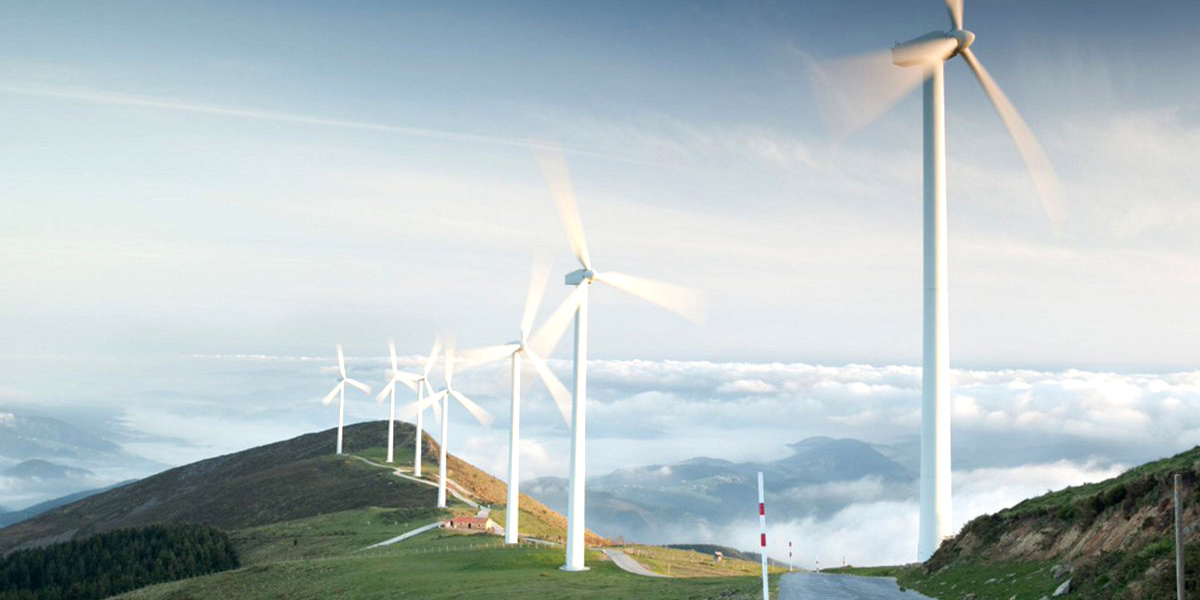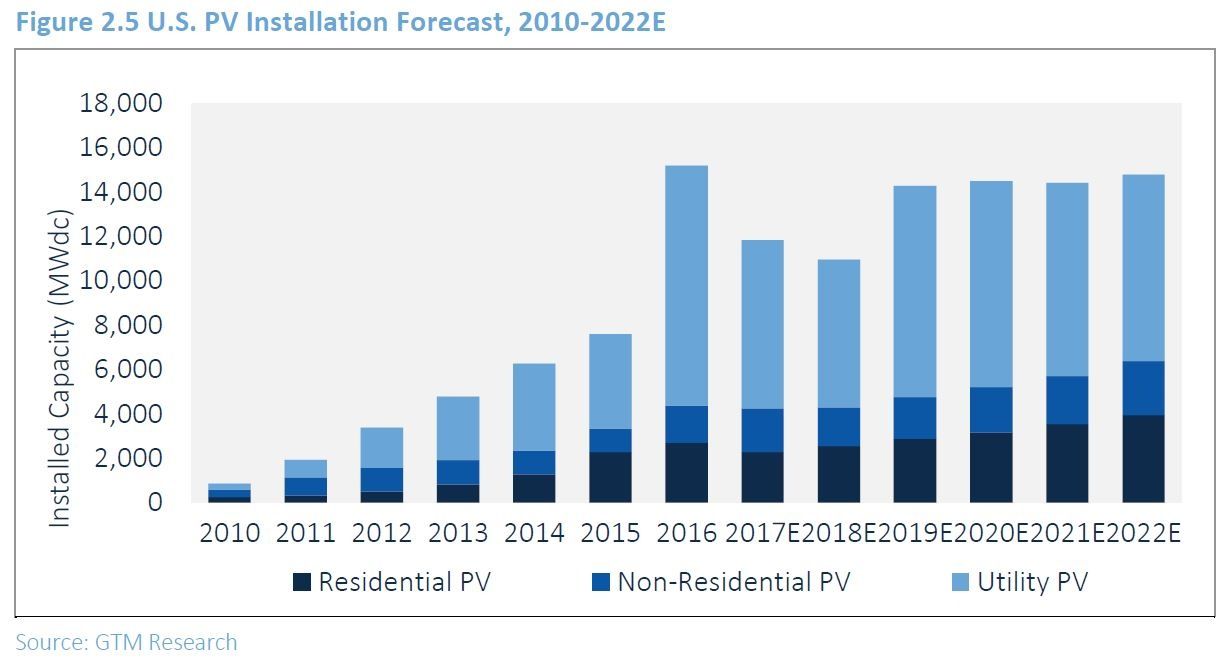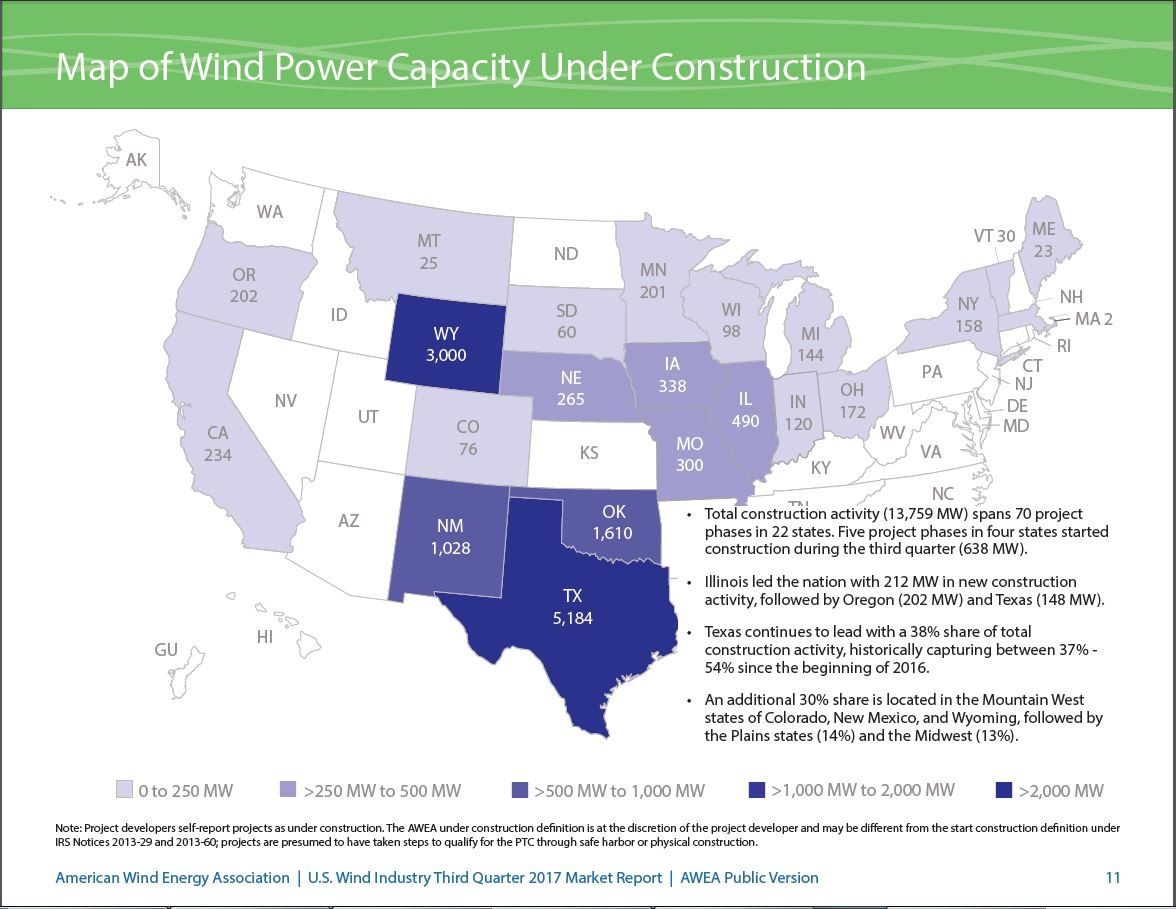

By John Rogers
While the year 2017 is one I don’t mind seeing in the rear view mirror (and I’ve got colleagues that would agree), in the field of clean energy we made a whole lot o’ progress. A new year, if I’ve done my math right, means 12 more months to move the ball forward on clean energy. Here are a few things I’ll be keeping my eyes on as we traverse the length of 2018.
Solar—Sour or Soar?
For solar power, February should be when we see the official tally for 2017 progress—how much, where, what price, what sizes. We already know, though, that last year was down from the record-breaking 2016.
One factor is that very record-breaking-ness: Developers and customers pushed to get lots of solar installed before an important investment tax credit was scheduled to expire. The tax credit got extended, but momentum carried many solar projects to completion in 2016. Not a bad thing, certainly, but it left 2017 as a bit of a cooling-off period.
Another really important factor: Right now, U.S. solar companies don’t know what kind of environment they’re going to be operating in, which is something I’ll be watching this very month. We’ve got a president who seems gung-ho about tariffs (in this case, on solar cell/module imports) even when they don’t make sense, and a decision due from him on Jan. 26 about whether to slap tariffs on.
In the meantime, we’re seeing, in the words of Solar Energy Industries Association CEO Abigail Ross Hopper, “what happens when policy uncertainty becomes a disruptive factor…” What we get: Shaky investors, as they try to read the tea leaves from an unstable teacup, and higher prices (temporary though they may be), as solar companies scramble to bring in what they can before any tariff hammer falls.
What that adds up to is that lower 2017, and a 2018 with potentially even fewer new solar installations, even if wisdom prevails on the tariff issue.
Still, the solar totals are and could still be impressive. The third quarter of 2017 saw more solar come online than in all of 2011, and the 2017 totals will show that it was the second-best year ever. And 2018 could bring considerably higher amounts of new solar than any year other than 2016 and 2017—and still enough new solar to power more than a million and a half typical U.S. homes.
And then there’s the broader, and longer-term picture: Solar costs have kept impressively dropping as scale has ramped up, and solar has gotten harder and harder to ignore (even for smaller projects). Global totals for new solar are projected to have ended up much higher in 2017 than in 2016, and to be in that same high range in 2018.
Solar’s (mostly) steady climb.GTM-SEIA
Wind—Sigh or Fly?
Wind power is another exciting technology to watch in 2018, including because the viewing can take you from coast to coast, and from the Great Plains to the waters off our shores. And, like solar, this technology has both headwinds and tailwinds.
- For wind (and solar), the big holiday almost-spoiler was the federal tax bill. The house and senate versions each had provisions that would have undercut incentives, even for projects already up and running with those incentives in their calculations. That particular crisis was averted—a testament to the strong bipartisan support that wind has earned (and the volume of opposition to wrong-headedness).
- Another big factor for land-based wind is the planned phase-out of one of those key incentives, the production tax credit (PTC). Wind projects that began construction before last year can get 100 percent of the tax credit. In 2017, 2018 and 2019, though, that credit is falling to 80 percent, 60 percent and 40 percent, before going away entirely for projects started in 2020 and beyond. That gives a strong incentive to get projects built now.
- Wind power also has going for it the incredible cost reductions it has achieved in recent years: In some parts of the country, it’s the lowest-cost thing out there. A utility in Colorado, for example, had projected last year that it could save its customers hundreds of millions of dollars over the next few decades by replacing some of its coal plants with renewable energy. When they asked for bids, though, the wind projects came in at even lower prices than they had assumed (more info here; subscription required).
Lots of tailwinds, and the numbers are bearing that out: The amount of wind capacity under construction as of the third quarter of 2017 was about as strong as ever (and all over the map, in a good way). And the fourth quarters are always the strongest for actually turning projects on. So I’ll be looking for those results in the next few weeks.
Wind power on the move.AWEA
Wind in the Water—Time to Buy
And then there’s offshore wind. Since the launch in late 2016 of the first offshore wind project in the country (and the hemisphere), off Rhode Island, this has been a technology on the move. And 2018 looks to bring more progress:
- Utilities in Massachusetts will be deciding on the offshore wind proposals that got submitted last month by several high-powered collaborations. The timeline calls for the winners to be selected later this year, meaning at least 200-800 megawatts of offshore wind could be on the way, the first phase of the state’s planned 1,600 megawatts by 2030.
- New York Andrew Cuomo just announced the next step toward realizing the state’s 2030 goal of 2,400 megawatts of offshore wind: a call for the state to get bids for at least 800 megawatts of offshore wind power over this year and next, enough power for some 400,000 Empire State households.
- With the election last November, New Jersey now has a governor (Phil Murphy) with an even bolder 2030 goal than New York’s or Massachusetts’s: 3,500 megawatts. The Garden State certainly has the coastline, and the wind resource, to support ambitious plans.
- Meanwhile, Maryland has two projects that were awarded state support last year and that add up to more than 360 megawatts, Connecticut is exploring a requirement that might result in a couple hundred megawatts of offshore wind, and several other East Coast states also have offshore wind areas already leased out. Don’t lose sight of the Great Lakes or the West Coast, either.
For a Happy 2018
There’s plenty more to watch beyond wind and solar, of course. Other renewable energy technologies stand ready to contribute. Energy storage is growing (and getting cheaper) more quickly than just about anybody imagined. Energy efficiency keeps making things better, smarter, cheaper. And we could talk about electric vehicle progress for hours (or you could just look here).
States are figuring out, too, how to modernize electricity grids and policies—and upgrade transmission lines—to help us get off large old centralized power plants and take advantage of renewable energy in all its forms. All worth monitoring, and helping move along.
And we need to keep an eye on fossil fuels, too, to make sure bad decisions don’t get made to try to prop up failing coal plants via federal policy (even if they fail), or at the state level. To make sure our U.S. Environmental Protection Agency works for us in cutting pollution from power plants, not for polluters.
And we need to make sure we don’t hamstring our economies with an overcommitment to natural gas.
But for energy progress in 2018—for our economy, for jobs, for our environment, for our kids—clean energy is what I’ll be watching.
John Rogers is a senior energy analyst with expertise in renewable energy and energy efficiency technologies and policies.

 233k
233k  41k
41k  Subscribe
Subscribe 

